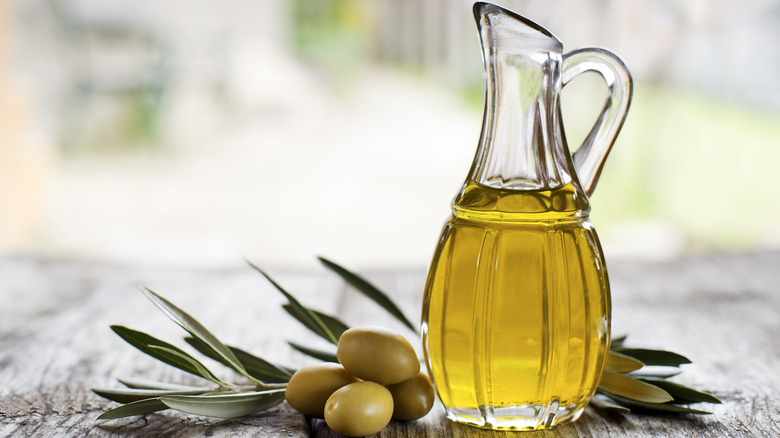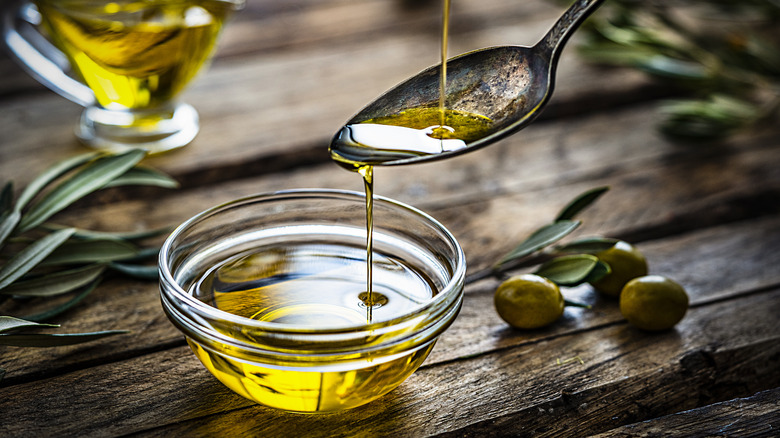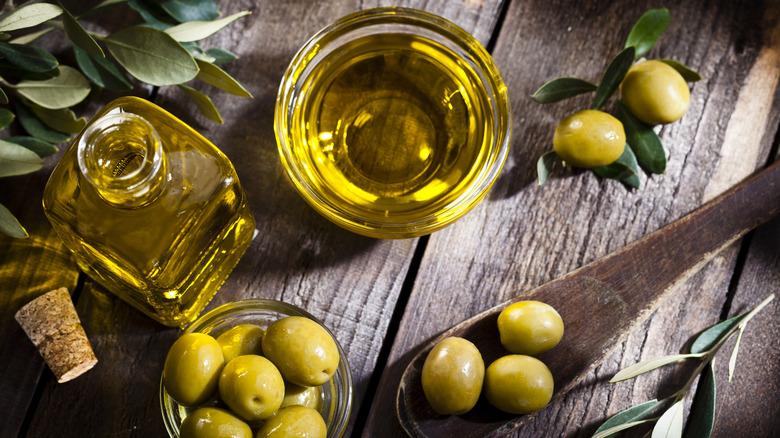'Light' Olive Oil Isn't Actually More Nutritious
At first glance, food labels seem to provide all the information necessary for making informed decisions about food choices. They offer allergen warnings, nutrition tables detailing protein and sugar content, and terms like "light" or "lite" to indicate a reduced amount of fat, sodium, or calories. However, such labels have often been criticized for being misleading. This confusion is particularly evident in the context of olive oil.
The term "light" generally suggests that the fat, calorie, or sodium content in a food item has been reduced by half compared to its standard version. So, if you've been purchasing light olive oil under the assumption that it's lower in fat, calories, or sodium — and thus more nutritious — your misunderstanding is entirely reasonable ... yet entirely incorrect. In reality, "light" in olive oil refers not to its nutritional content but to its processing, taste, and color. "Light" or "extra-light" doesn't imply that the olive oil is more nutritious; it simply means that the oil has a lighter color and a milder flavor.
What light olive oil really means
To start with, it's challenging to determine what constitutes a more nutritious olive oil, especially in terms of fat and calories, since almost all types contain around 14 grams of fat and 120 calories per tablespoon. The term "light" refers only to the processing and the appearance or taste of a particular bottle of olive oil. There are three main processing methods for olive oils: cold-pressed, unrefined, or refined. Cold-pressed olive oils (also known as extra virgin) are at the higher end of the quality spectrum, while refined olive oils (often labeled as light olive oil) are on the opposite end. "Refined" indicates that the olive oil underwent two stages of production, involving heat or chemicals after the initial pressing of the olives.
Unfortunately, the heat used in refining light olive oils can strip away some of the nutrients naturally present in olives. For instance, extra-virgin olive oils, made using cold-pressed methods, retain more nutrients, including polyphenol antioxidants, which are significantly reduced in refined varieties where heat is applied. Moreover, some refined olive oils may be diluted with other vegetable oils. Therefore, while there are many factors to consider in choosing the most nutritious olive oil, relying solely on the "light" label is not advisable.
When to use different olive oil varieties
Nutrition aside, refining also impacts the color and flavor of light olive oil, resulting in a yellowish hue rather than a deep green, and giving it a more neutral taste. This neutrality might make light olive oil seem less exciting compared to the robust pepperiness of extra-virgin varieties. However, this can also be its greatest advantage. The stronger flavor of extra-virgin olive oil is more pronounced when used to finish dishes like salads and sauces, whereas light varieties are ideal when you need a neutral-tasting olive oil that won't impart its own flavor — as in baking, for example.
Light olive oil also has an advantage over its extra-virgin counterpart: it has a longer shelf life and a higher smoke point. While extra-virgin olive oil starts to smoke between 350 and 410 degrees Fahrenheit, light olive oil has a substantially higher smoke point, ranging from 390 to 470 degrees Fahrenheit. Therefore, if you're looking to dip your freshly baked bread in some luxurious olive oil, or want to make tangy vinaigrettes and nutty pesto sauces, extra-virgin olive oil (EVOO) is the better choice. But for frying, sauteing, and high-heat cooking, or when you don't want the oil to add its own flavor, light olive oil might be better suited for the job.



